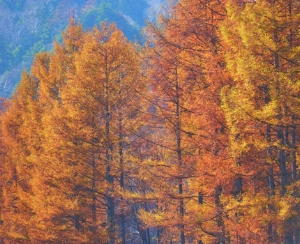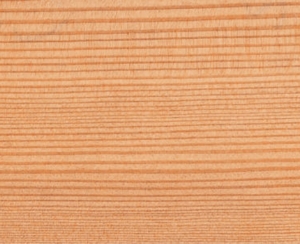Karamatsu
Larix kaempferiDeciduous conifers
Family: Pinaceae
It has the origin of the name that it resembles a pine of Tang painting (Chinese painting). Because it is the only deciduous tree among Japanese coniferous trees, it sometimes is written as "deciduous pine". Tree forms are beautiful, leaves turns golden in autumn, and the trees color the autumn scenery beautifully. Leaves drop in the late autumn. Despite the beautiful shape and the soft image of the tree, the larch lumber is rather heavy.


FEATURES
The color of heartwood is bronze. Although it is relatively pale when the tree is young, it gets darker as the tree matures. Sapwood is yellowish white. The substantial difference in shapes of cells formed from spring to summer results in clearly understandable annual rings, thus the texture is rough. Specific gravity in air-dry ranges from 0.40 to 0.60, (0.50 in average), being one of heavy-duty softwood lumbers. Natural Karamatsu which grow older and slower is called "Ten-Kara", and it is highly evaluated in contrast to young trees planted and it is traded at a high price as a precious wood. Heartwood has moderate preservatory quality.
USAGE
Karamatsu is a durable species that is used as a utility pole or pile. It used to be that it is difficult to use it as a sawmill, but due to recent progress in utilizing and wood processing technologies, etc., products that make use of the strength of the lumber have become available and are actively used. Karamatsu is used for building, public work, dunnage, pallet, furniture, and packing. Karamatsu plywood have been increasing recently. In addition, Karamatsu is resistant to decay and has moderate elasticity, so it is also used for guardrails and the like.
Charactristic Table
| Specific gravity in air-dry |
Mean comefficient shrinkage for 1% change of moisture content(%) |
Surength(Mpa) | Modulus of elastcity in bending(GPa) |
|||
|---|---|---|---|---|---|---|
| Radial direction | Tangential direction | Bending surenght | Longitudinal compressive Surenght |
Shear strength parallel to grain |
||
| 0.50 | 0.18 | 0.28 | 78 | 44 | 7.8 | 9.8 |


